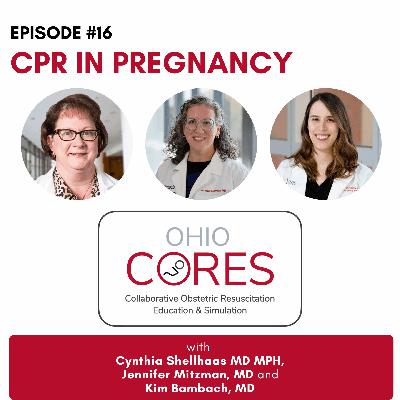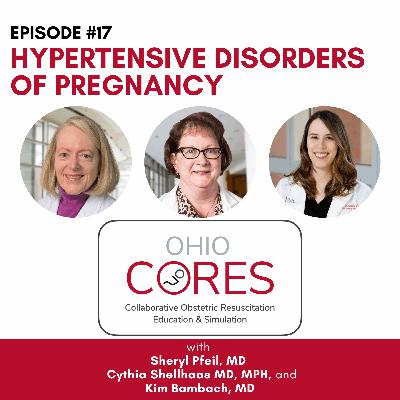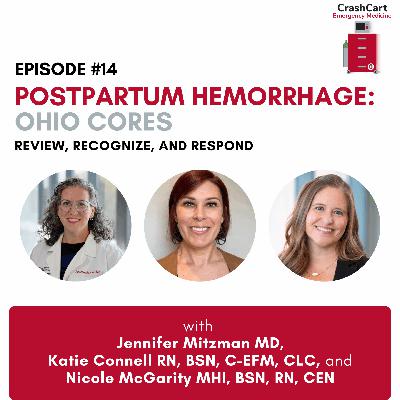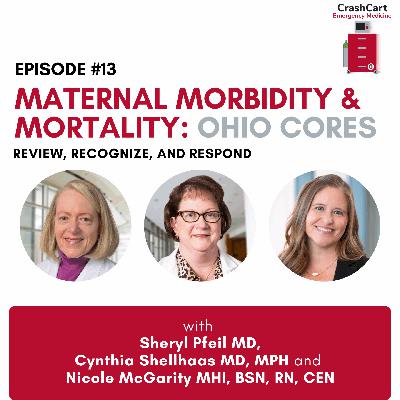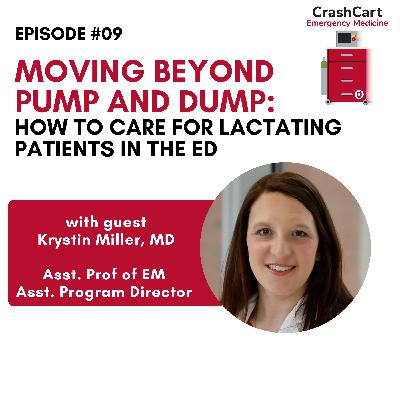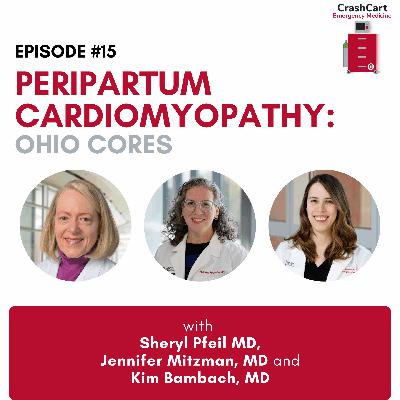CPR in Pregnancy: Ohio CORES Series
Description
Are you prepared for an OB emergency? In this special six-part podcast series, the Ohio CORES team at The Ohio State University explores the management of pregnant and postpartum women in emergency situations. Each episode focuses on a high-stakes obstetrics scenarios, including: 1) maternal morbidity and mortality, 2) postpartum hemorrhage, 3) hypertensive emergencies, 4) cardiac arrest in pregnant patients, 5) peripartum cardiomyopathy, and 6) complicated vaginal deliveries. Whether you’re in the field, ED, ICU, or on L&D, this series equips you with the knowledge to respond when seconds count.
Ohio CORES (Collaborative Obstetric Resuscitation Education and Simulation) is an interdisciplinary team of educators from The Ohio State University dedicated to improving care for pregnant and postpartum women in critical condition through high-impact education and simulation training. Supported by funding from the Ohio Department of Children and Youth, Ohio CORES delivers obstetric emergency education to healthcare providers across the state.
In this episode of Crash Cart EM, we cover high-quality CPR in pregnancy- a rare emergency with a 7% survival rate. Learn how to adapt your resuscitation approach, avoid common pitfalls, and perform a resuscitative hysterotomy.
Guests: Jennifer Mitzman, MD; Kimberly Bambach, MD
Host: Sheryl Pfeil, MD
Editors: Rashelle Ghanem; Nicole McGarity, MHI, BSN, RN, CEN; Cynthia Shellhaas, MD, MPH; Kim Bambach, MD
1. Common Causes of Maternal Cardiac Arrest
- Most common: Pulmonary embolism, hemorrhage (including trauma), hypertensive emergencies, infections, peripartum cardiomyopathy, and rare causes like stroke
- Often occurs during or immediately after delivery
- Risk factors: Advanced maternal age, African American race, high parity, and lack of prenatal care
2. What Stays the Same in CPR
- Same compression rate (100–120/min), hand positioning and depth, defibrillation pad placement and energy levels, medication dosing (e.g., 1 mg epinephrine)
3. Key Differences in Pregnant Patients
- Manual Lateral Uterine Displacement:
- Displace uterus to the left to relieve IVC compression
- Must be done manually- lateral tilt is no longer recommended
- No LUCAS Device: LUCAS device use is not recommended for use in pregnancy due to safety concerns
4. Procedure and Airway Considerations
- Prefer humeral IO (above diaphragm) over tibial
- Chest tubes: Place higher (3rd–4th ICS) due to elevated diaphragm
- Aggressive oxygenation: Avoid borderline sats—aim for 97–99%
- High aspiration risk: Have readily suction available (two are helpful)
- Airway edema common: Downsize ETT
5. Resuscitative Hysterotomy
- Timing: If no ROSC by 4 minutes and >24 weeks gestation (or fundus at umbilicus), proceed
- Purpose: Increases maternal preload and decreases afterload- improving perfusion. This is a resuscitative procedure for the pregnant patient and will also maximize chances of survival for the fetus. The procedure is still indicated in the case of fetal demise.
- Steps:
- Vertical midline incision
- Dissect to the peritoneal cavity
- Incise uterus
- Deliver fetus, clamp/cut cord
- Deliver placenta, pack uterus
- Continue high-quality CPR throughout
7. Team Preparation & Simulation
- The mental barrier is real– similar to performing a cricothyroidotomy
- Debrief early, assign roles, and have equipment ready
- Practice with simulation to improve readiness
Resources:

